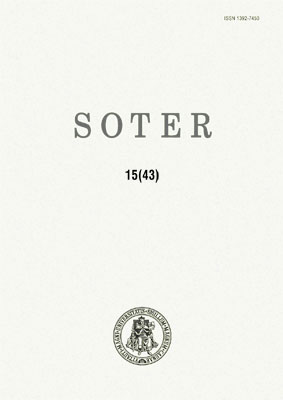Kraštovaizdžio su kryžiumi ištakos ir tradicija Lietuvos dailėje
The beginnings and the tradition of the image of the landscape with a cross in the Lithuanian painting
Author(s): Aušrinė Kulvietytė-SlavinskienėSubject(s): Christian Theology and Religion
Published by: Vytauto Didžiojo Universitetas
Keywords: kraštovaizdis su kryžiumi; Lietuvos dailė; romantizmas; realizmas; nacionalinis romantizmas; landscape with a cross; Lithuanian painting; romanticism; realism; national romanticism
Summary/Abstract: Straipsnyje analizuojamas XX a. pradžios Lietuvos dailėje itin paplitusio kraštovaizdžio su kryžiumi tipas. Atsekamos jo ištakos XIX a. pradžios romantizmo epochoje, tolesnė raida realizmo bei nacionalinio romantizmo meninių krypčių kūriniuose. Kraštovaizdis su kryžiumi, laikomas lietuviškosios kultūros savastimi, aptariamas atsižvelgiant į platesnį europinį dailės kontekstą, atrandama jo analogų Vokietijos, Lenkijos dailėje. Taip atsiskleidžia bendrumai ir savitumai. Landscape with a cross is an inseparable part of culture for every Lithuanian. The conception was greatly consolidated by the national art movement at the beginning of 20th century. The members of this movement managed to foresee that Lithuanian folk art would serve as the base for the future’s national painting. The professional works of painting included a number of ethnographic motives, symbols, and stylistic elements; whereas, the cross played the exceptional role. Painters, culture historians, litterateurs began to shoot, redraw or collect vanishing crosses whose forms and decorum varied to great extremes. The collected material was being published by individual albums or printed in magazines and newspapers. Many painters tended to portray the country’s landscape with a roadside cross. However, the more accurate glance at the painting of the 19th century enables us to assume that the beginnings of the image of the landscape with a cross can be traced slightly earlier than in the first part of the 20th century. Many Lithuanian realists used to accept the ideas of national romanticism which prevailed in the painting at the end of the 19th and the beginning of the 20th centuries. Thus their works as well as the image of their country’s landscape with a cross became an integral part of the national art movement and the process of seeking a unique Lithuanian style.
Journal: SOTER: religijos mokslo žurnalas
- Issue Year: 43/2005
- Issue No: 15
- Page Range: 307-315
- Page Count: 9
- Language: Lithuanian

